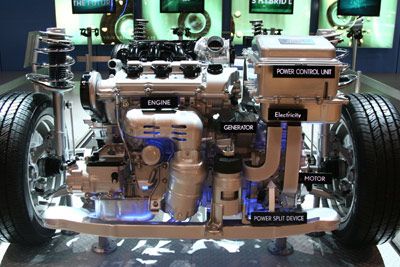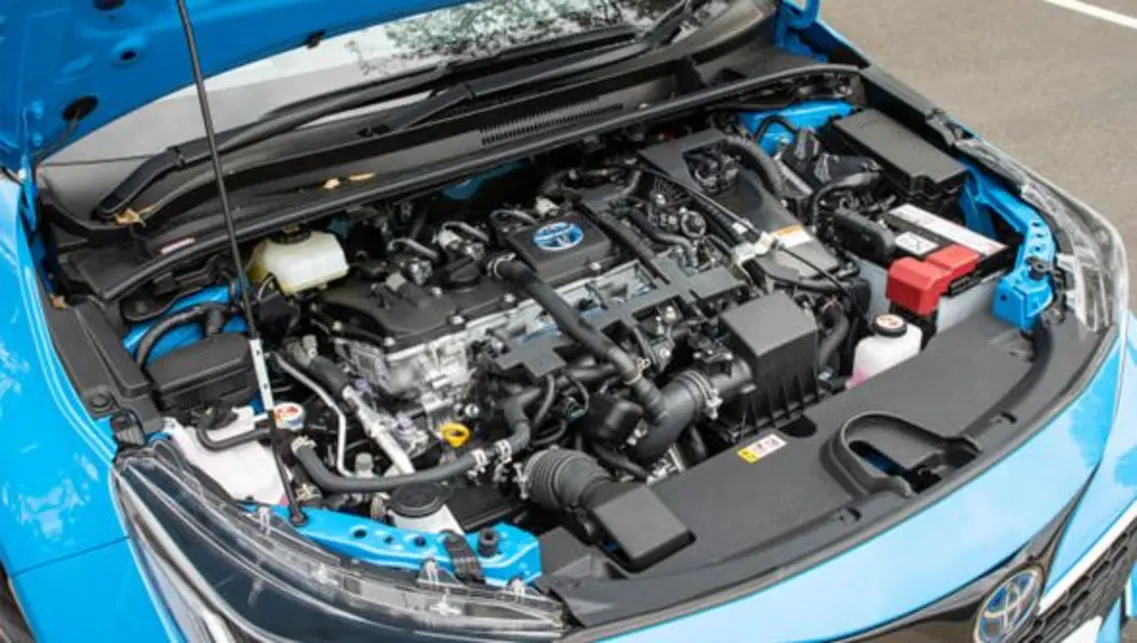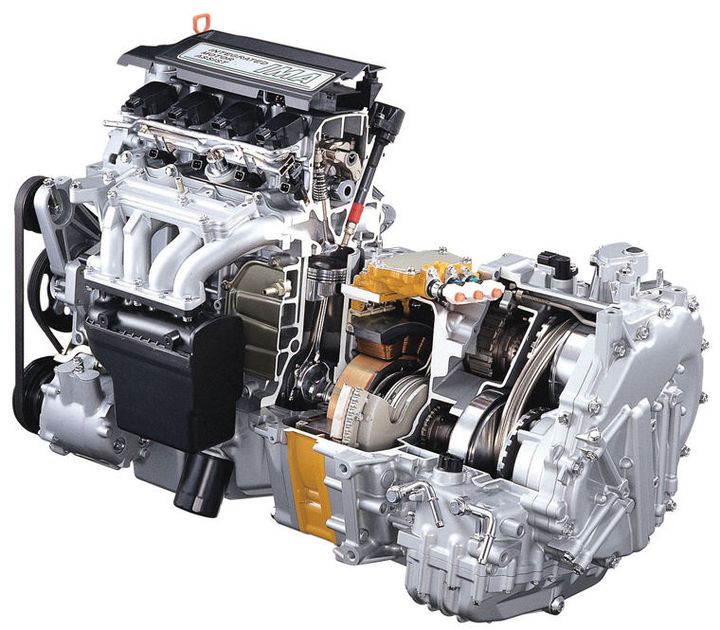


The automotive industry is undergoing a transformative shift towards sustainable mobility solutions. As concerns over environmental impact and fossil fuel dependence continue to grow, hybrid engines have emerged as a practical and innovative technology, combining the strengths of traditional internal combustion engines and electric motors. This article delves into the world of hybrid engines, exploring their principles, components, benefits, and real-world applications, while also examining their role as a stepping stone towards a fully electrified future.

The transportation sector has long been a significant contributor to greenhouse gas emissions and air pollution, fueling the urgent need for more eco-friendly solutions. Governments and regulatory bodies worldwide are implementing stricter emissions standards and fuel economy requirements, driving automakers to explore alternative powertrain technologies.
Hybrid engines represent a transitional solution, bridging the gap between conventional internal combustion engines and fully electric vehicles (EVs). By leveraging the strengths of both power sources, hybrid powertrains offer improved fuel efficiency, reduced emissions, and a more sustainable driving experience, while addressing concerns such as range anxiety and charging infrastructure availability.
This comprehensive article will explore the fundamental principles of hybrid engines, their various types, and the intricate mechanisms that enable their efficient operation. Additionally, it will examine the benefits and drawbacks of hybrid technology, highlight real-world examples and market trends, and discuss the role of hybrid engines as a stepping stone towards a fully electrified automotive future.
A hybrid engine is a powertrain system that combines a traditional internal combustion engine (ICE) with one or more electric motors and a rechargeable battery pack. The key principle behind hybrid engines is to leverage the strengths of both power sources – the high energy density of gasoline or diesel fuel and the high efficiency of electric motors – to achieve improved fuel economy and reduced emissions compared to conventional vehicles.
Hybrid engines come in several different types, each with its own unique characteristics and level of hybridization:
| Type | Description |
|---|---|
| Mild Hybrids (Micro or Battery-Assisted Hybrids) | Utilize a small electric motor to assist the internal combustion engine, primarily during acceleration or high-load situations. The electric motor cannot power the vehicle independently, and the battery is recharged through regenerative braking and the engine itself. Examples include systems like GM's eAssist, Fiat/Chrysler's eTorque, and Mercedes' EQ Boost. |
| Full Hybrids (Parallel Hybrids) | Can be powered by the internal combustion engine, the electric motor(s), or a combination of both. The electric motor(s) can propel the vehicle independently for short distances and low speeds, typically in city driving conditions. The battery pack is recharged through regenerative braking and the engine. Popular examples include the Toyota Prius, Honda Insight, and Ford Escape Hybrid. |
| Plug-in Hybrids (PHEVs) | Have larger battery packs than regular hybrids, allowing them to be charged from an external power source. They can run solely on electric power for longer distances (typically 20-50 miles) before switching to hybrid mode, where the internal combustion engine assists the electric motor(s). Examples include the Chevrolet Volt, Toyota Prius Prime, and Chrysler Pacifica Hybrid. |
| Series Hybrids (Range-Extender Hybrids) | The internal combustion engine is used solely as a generator to charge the battery pack, which powers the electric motor(s) that drive the wheels. The engine never directly powers the wheels. This setup allows for extended electric-only driving range, with the engine acting as a range extender when the battery is depleted. The BMW i3 with Range Extender is an example of this type of hybrid. |
Hybrid engines are complex systems that seamlessly integrate various components to achieve optimal efficiency and performance. To understand their operation, it is essential to examine the core components and operating modes.
The internal combustion engine (ICE) is typically a gasoline or diesel engine, similar to those found in conventional vehicles. It serves as the primary power source in hybrid systems, providing the necessary energy for propulsion and charging the battery pack.
One or more electric motors are used to provide propulsion, either independently or in conjunction with the ICE. These motors are highly efficient and can deliver instant torque, contributing to improved acceleration and overall performance.
A rechargeable battery pack stores electrical energy to power the electric motor(s). The battery is charged through regenerative braking and, in some cases, by the ICE or an external power source (in the case of plug-in hybrids).
The regenerative braking system captures the kinetic energy generated during braking and converts it into electrical energy to recharge the battery pack. This process helps to recover energy that would otherwise be lost as heat, improving overall efficiency.
The power control unit (PCU) is the brain of the hybrid system, managing the flow of power between the ICE, electric motor(s), and battery pack for optimal efficiency and performance. It intelligently determines the most efficient mode of operation based on driving conditions and driver inputs.
During operation, the hybrid system can operate in different modes, depending on the driving conditions and the type of hybrid:
| Mode | Description |
|---|---|
| Electric-only Mode | The vehicle is powered solely by the electric motor(s), using energy from the battery pack. This mode is typically used for low-speed city driving and short distances, as it produces zero direct emissions and offers a quiet, smooth driving experience. |
| Engine-only Mode | The internal combustion engine powers the vehicle, while the electric motor(s) are disengaged. This mode is often used for highway driving or when the battery is depleted, as the ICE is more efficient at higher speeds and sustained loads. |
| Hybrid Mode | Both the internal combustion engine and electric motor(s) work together to provide propulsion, with the PCU optimizing the power distribution for maximum efficiency. This mode is particularly useful during acceleration or high-load situations, leveraging the strengths of both power sources. |
| Regenerative Braking Mode | When the vehicle is decelerating or braking, the electric motor(s) act as generators, converting the kinetic energy into electrical energy to recharge the battery pack. This process helps to recover energy that would otherwise be lost as heat, improving overall efficiency and extending the vehicle's range. |
Hybrid engines offer several significant advantages over traditional gasoline or diesel-powered vehicles:
Improved Fuel Efficiency
Reduced Emissions
Quieter Operation
Reduced Reliance on Fossil Fuels
By utilizing the electric motor(s) for propulsion and capturing energy through regenerative braking, hybrid engines can achieve significantly better fuel economy than their conventional counterparts. This translates into lower operating costs and reduced dependence on fossil fuels.
The use of electric power and the ability to operate in electric-only mode, especially in city driving conditions, results in lower emissions of greenhouse gases and other pollutants. Hybrid vehicles contribute to improved air quality and a reduced environmental impact.
When running on electric power, hybrid vehicles produce minimal noise, contributing to a more pleasant driving experience, especially in urban areas. This quieter operation can also reduce noise pollution and improve the overall quality of life in densely populated areas.
By leveraging electric power, hybrid vehicles can reduce their dependence on gasoline or diesel, which are non-renewable resources. This shift towards electrification supports the transition to a more sustainable and environmentally friendly transportation system.
While hybrid engines offer significant advantages, it is essential to acknowledge their potential drawbacks and limitations:
Higher Upfront Costs
Limited All-Electric Range
Complexity and Maintenance
Performance Trade-offs
The additional components and complexity of hybrid systems generally make hybrid vehicles more expensive to purchase compared to their conventional counterparts. However, the long-term fuel savings and lower operating costs can offset this initial premium over time.
Non-plug-in hybrids have relatively small battery packs, limiting their electric-only driving range. Plug-in hybrids (PHEVs) can mitigate this issue but still have a finite all-electric range before switching to hybrid mode.
The integration of multiple power sources and components in hybrid systems can increase complexity and potentially lead to higher maintenance costs, especially for specialized components like battery packs. Proper maintenance and care are crucial for ensuring optimal performance and longevity.
In some cases, hybrid vehicles may sacrifice performance characteristics like acceleration or top speed to prioritize efficiency and emissions reduction. However, advancements in hybrid technology are continuously improving performance while maintaining efficiency gains.
Hybrid vehicles have become increasingly prevalent in the automotive market, with major manufacturers offering hybrid options across various vehicle segments.

Toyota Prius (full hybrid)
Honda Insight (full hybrid)
Ford Escape Hybrid (full hybrid)
Chevrolet Volt (plug-in hybrid)
Toyota Prius Prime (plug-in hybrid)
Chrysler Pacifica Hybrid (plug-in hybrid)
BMW i3 with Range Extender (series hybrid)
The Toyota Prius is widely regarded as the pioneer of modern hybrid vehicles and has become synonymous with hybrid technology. Its parallel hybrid system combines a gasoline engine with an electric motor, delivering impressive fuel efficiency and low emissions.
Honda's Insight is a compact hybrid vehicle that offers a balance of fuel efficiency, performance, and affordability. Its parallel hybrid system and aerodynamic design contribute to its impressive fuel economy ratings.
The Ford Escape Hybrid is a popular compact SUV that combines the practicality of an SUV with the efficiency of a hybrid powertrain. Its parallel hybrid system provides a smooth driving experience and improved fuel economy compared to its conventional counterparts.
The Chevrolet Volt is a pioneering plug-in hybrid electric vehicle (PHEV) that can travel up to 53 miles on electric power alone before switching to hybrid mode. Its innovative powertrain and extended electric range make it a popular choice for eco-conscious drivers.
The Toyota Prius Prime is a plug-in hybrid version of the iconic Prius, offering an all-electric range of up to 25 miles and a combined fuel economy rating of up to 54 mpg. Its advanced hybrid system and sleek design make it a compelling choice for those seeking efficiency and style.
The Chrysler Pacifica Hybrid is a family-friendly minivan that combines the practicality of a spacious interior with the efficiency of a plug-in hybrid powertrain. Its electric-only range of up to 32 miles and impressive fuel economy make it a standout in the minivan segment.
The BMW i3 with Range Extender is a unique series hybrid that primarily relies on an electric motor for propulsion. Its gasoline engine acts as a range extender, charging the battery pack when needed, providing an extended driving range for longer trips.
As concerns over environmental impact and fuel efficiency continue to grow, many automakers have announced plans to further expand their hybrid and electric vehicle offerings in the coming years. Hybrid technology is seen as a crucial stepping stone towards a more sustainable and electrified future for the automotive industry.
While hybrid engines offer significant advantages over traditional internal combustion engines, they also represent a transitional technology towards fully electric vehicles (EVs).
EVs eliminate the need for an internal combustion engine altogether, relying solely on rechargeable battery packs and electric motors for propulsion. As battery technology continues to improve and charging infrastructure becomes more widespread, EVs are poised to become the dominant form of sustainable transportation in the future.
Hybrid engines play a crucial role in the transition towards sustainable mobility by bridging the gap between conventional vehicles and fully electric ones. They provide a practical solution for those who require longer driving ranges or are not yet ready to fully transition to EVs due to factors such as charging infrastructure availability or upfront costs.
Hybrid engines represent a significant advancement in automotive technology, offering a practical solution for reducing environmental impact and improving fuel efficiency. By combining the strengths of internal combustion engines and electric motors, hybrid powertrains deliver a more sustainable and eco-friendly driving experience. While they have limitations and drawbacks, hybrid engines serve as a crucial stepping stone towards a fully electrified future for the automotive industry. As technology continues to evolve and consumer demand for sustainable transportation grows, hybrid vehicles will play an increasingly important role in shaping a greener and more sustainable future for mobility.
A mild hybrid uses a small electric motor to assist the internal combustion engine, while a full hybrid can run on the electric motor alone for short distances. The electric motor in a full hybrid is more powerful and has a larger battery pack.
A plug-in hybrid has a larger battery pack that can be recharged from an external power source, allowing for longer electric-only driving range before switching to hybrid mode.
In a series hybrid, the internal combustion engine is used solely as a generator to charge the battery pack, which powers the electric motor(s) that drive the wheels. The engine never directly powers the wheels.
Regenerative braking captures the kinetic energy generated during braking and converts it into electrical energy to recharge the battery pack, improving overall efficiency and extending the vehicle's range.
The PCU is the brain of the hybrid system, intelligently determining the most efficient mode of operation (electric, engine, or hybrid) based on driving conditions and driver inputs.
Hybrid systems are more complex, and specialized components like battery packs may require additional maintenance or replacement over time, potentially leading to higher costs.
In some cases, hybrid vehicles may sacrifice performance characteristics like acceleration or top speed to prioritize efficiency and emissions reduction, although advancements are improving performance while maintaining efficiency gains.
Hybrid engines serve as a transitional technology, bridging the gap between conventional vehicles and fully electric ones, providing a practical solution for those not yet ready to fully transition to EVs.
Many automakers see hybrid technology as a crucial stepping stone towards a more sustainable and electrified future for the automotive industry, with plans to expand their hybrid and electric vehicle offerings.
Widespread adoption of hybrid vehicles can lead to reduced greenhouse gas emissions, improved air quality, and a reduced reliance on non-renewable fossil fuels, contributing to a more sustainable transportation system.

Sarah isn't your average gearhead. With a double major in Mechanical Engineering and Automotive Technology, she dived straight into the world of car repair. After 15 years of turning wrenches at dealerships and independent shops, Sarah joined MICDOT to share her expertise and passion for making cars run like new. Her in-depth knowledge and knack for explaining complex issues in simple terms make her a valuable asset to our team.






